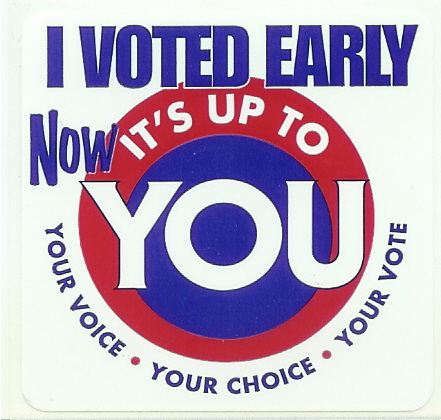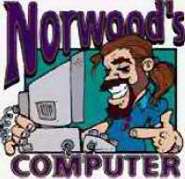August 28, 2004
Judge strikes anti-recount rule
A judge has overturned the state rule banning recounts of votes from touch screen machines. Now, the rule was universally derided by progressive types, but it had a sort of dark logic in that, in reality, there is nothing to recount in a touch screen machine. That’s the reason we need a paper trail.
State elections officials should not have barred manual recounts for touch screen voting systems, a judge ruled Friday.The decision came in a challenge by the American Civil Liberties Union of Florida, Common Cause and others who say Secretary of State Glenda Hood overstepped her authority when she abolished manual recounts for touch screen machines used in 15 Florida counties.
The ruling left state and county officials scratching their heads over their next move.
The ruling might pave the way for paper trails on touch screen machines, said ACLU Florida executive director Howard Simon.
But it is unlikely to have any impact on Tuesday's primaries, though it could affect the November general election.
"We all are of the mindset that there is nothing to recount," said Pasco County Elections Supervisor Kurt Browning.
If he has to print out all the data in Pasco's 1,500 touch screen machines, it would take working 24 hours a day to meet the seven-day time limit for completing a recount, Browning said.
The state might appeal.
"There are no problems with touch screen machines," said spokeswoman Alia Faraj. "They have been used in hundreds of elections since 2000 and were chosen by counties to avoid the problems we had in 2000."
Who the hell is Alia Faraj, and why are her blatant lies being reprinted in newspapers around the state? There are huge numbers of documented problems with touch screen machines. In several instances, the machines were responsible for determining the wrong winner of elections. The machines reported results that were not at all based on the votes that were cast.
Bev Harris, of Black Box Voting broke the story of the problems with computerized voting, and she remains among the best informed experts in the country. Here’s what she has to say:
In the Alabama 2002 general election, machines made by Election Systems and Software (ES&S) flipped the governor’s race. Six thousand three hundred Baldwin County electronic votes mysteriously disappeared after the polls had closed and everyone had gone home. Democrat Don Siegelman’s victory was handed to Republican Bob Riley, and the recount Siegelman requested was denied. Three months after the election, the vendor shrugged. “Something happened. I don’t have enough intelligence to say exactly what,” said Mark Kelley of ES&S.When I began researching this story in October 2002, the media was reporting that electronic voting machines are fun and speedy, but I looked in vain for articles reporting that they are accurate. I discovered four magic words, “voting machines and glitch,” which, when entered into a search engine, yielded a shocking result: A staggering pile of miscounts was accumulating. These were reported locally but had never been compiled in a single place, so reporters were missing a disturbing pattern.
I published a compendium of 56 documented cases in which voting machines got it wrong.
How do voting-machine makers respond to these reports? With shrugs. They indicate that their miscounts are nothing to be concerned about. One of their favorite phrases is: “It didn’t change the result.”
Except, of course, when it did:
* In the 2002 general election, a computer miscount overturned the House District 11 result in Wayne County, North Carolina. Incorrect programming caused machines to skip several thousand party-line votes, both Republican and Democratic. Fixing the error turned up 5,500 more votes and reversed the election for state representative.
* This crushing defeat never happened: Voting machines failed to tally “yes” votes on the 2002 school bond issue in Gretna, Nebraska. This error gave the false impression that the measure had failed miserably, but it actually passed by a 2-to-1 margin. Responsibility for the errors was attributed to ES&S, the Omaha company that had provided the ballots and the machines.
* According to the Chicago Tribune, “It was like being queen for a day—but only for 12 hours,” said Richard Miholic, a losing Republican candidate for alderman in 2003 who was told that he had won a Lake County, Illinois, primary election. He was among 15 people in four races affected by an ES&S vote-counting foul-up.
* An Orange County, California, election computer made a 100 percent error during the April 1998 school bond referendum. The Registrar of Voters Office initially announced that the bond issue had lost by a wide margin; in fact, it was supported by a majority of the ballots cast. The error was attributed to a programmer’s reversing the “yes” and “no” answers in the software used to count the votes.
* A computer program that was specially enhanced to speed the November 1993 Kane County, Illinois, election results to a waiting public did just that—unfortunately, it sped the wrong data. Voting totals for a dozen Illinois races were incomplete, and in one case they suggested that a local referendum proposal had lost when it actually had been approved. For some reason, software that had worked earlier without a hitch had waited until election night to omit eight precincts in the tally.
* A squeaker—no, a landslide—oops, we reversed the totals—and about those absentee votes, make that 72-19, not 44-47. Software programming errors, sorry. Oh, and reverse that election, we announced the wrong winner. In the 2002 Clay County, Kansas, commissioner primary, voting machines said Jerry Mayo ran a close race but lost, garnering 48 percent of the vote, but a hand recount revealed Mayo had won by a landslide, receiving 76 percent of the vote.The excuses given for these miscounts are just as flawed as the election results themselves. Vendors have learned that reporters and election workers will believe pretty much anything, as long as it sounds high-tech. They blame incorrect vote counts on “a bad chip” or “a faulty memory card,” but defective chips and bad memory cards have very different symptoms. They don’t function at all, or they spit out nonsensical data.
In the November 2002 general election in Scurry County, Texas, poll workers got suspicious about a landslide victory for two Republican commissioner candidates. Told that a “bad chip” was to blame, they had a new computer chip flown in and also counted the votes by hand—and found that Democrats actually had won by wide margins, overturning the election.
......According to the Wall Street Journal, in the 2000 general election an optical-scan machine in Allamakee County, Iowa, was fed 300 ballots and reported 4 million votes. The county auditor tried the machine again but got the same result. Eventually, the machine’s manufacturer, ES&S, agreed to have replacement equipment sent. Republicans had hoped that the tiny but heavily Republican county would tip the scales in George W. Bush’s favor, but tipping it by almost 4 million votes attracted national attention.
November, 2003: Officials from Boone County, Indiana, wanted to know why their MicroVote machines counted 144,000 votes cast when only 5,352 existed.
Better than a pregnant chad—these machines can actually give birth.
In the 1996 McLennan County, Texas, Republican primary runoff, one precinct tallied about 800 votes, although only 500 ballots had been ordered.
“We don’t think it’s serious enough to throw out the election,” said county Republican Party Chairman M.A. Taylor. Error size: 60 percent.
Here’s a scorching little 66 percent error rate: Eight hundred and twenty-six votes in one Tucson, Arizona-area precinct simply evaporated, remaining unaccounted for a month after the 1994 general election. No recount appears to have been done, even though two-thirds of voters did not get their votes counted. Election officials said the vanishing votes were the result of a faulty computer program. Apparently, the software programming error and the person who caused it are still at large.
Some voters aren’t so sure that every single vote was accurately counted during the 2002 general election in Maryland.
According to the Washington Times, Kevin West of Upper Marlboro, who voted at the St. Thomas Church in Croom, said, “I pushed a Republican ticket for governor and his name disappeared. Then the Democrat’s name got an ‘X’ put in it.”
No one will ever know whether the Maryland machines counted correctly because the new Diebold touch-screen system is unauditable.
......Caracas, Venezuela In May 2000, Venezuela’s highest court suspended elections because of problems with the tabulation for the national election. Venezuela sent an air force jet to Omaha to fetch experts from ES&S in a last-ditch effort to fix the problem. Dozens of protesters chanted, “Gringos get out!” at ES&S technicians. Venezuelan President Hugo Chávez accused ES&S of trying to destablize the country’s electoral process. Chávez asked for help from the U.S. government because, he said, the United States had recommended ES&S.
Oh, and now Venezuela has a paper trail - printers are attached to the voting machines. What a concept.
There’s lots more - follow the link and read the whole thing. Then request and vote and absentee ballot, or vote early, but use a paper absentee ballot that you can request at your polling place.
 |
And look here for absentee voting info.
Posted by Norwood at August 28, 2004 10:08 AM